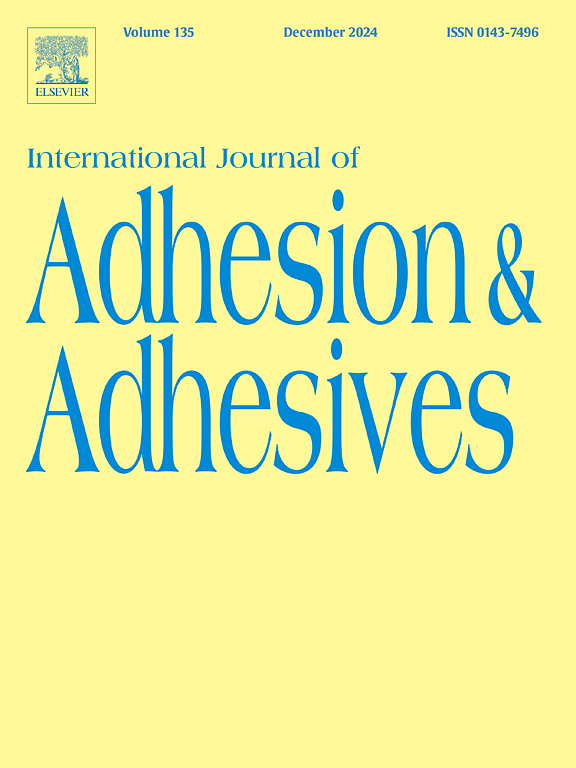碳纤维增强聚合物薄板与热冲击损伤泡沫混凝土粘结性能研究
IF 3.5
3区 材料科学
Q2 ENGINEERING, CHEMICAL
International Journal of Adhesion and Adhesives
Pub Date : 2025-04-25
DOI:10.1016/j.ijadhadh.2025.104042
引用次数: 0
摘要
研究了热冲击损伤泡沫混凝土(FC)试件与碳纤维增强聚合物(CFRP)薄板的粘结性能。此外,该研究为热损伤泡沫混凝土的锚固策略提供了新的见解,重点关注混凝土类型和CFRP片材尺寸如何影响粘结强度。采用两种混凝土混合料浇筑32个尺寸为(150mm × 150mm × 200mm)的试件。实验结果表明,NWAC试件在粘结载荷、滑移、刚度和韧性方面的平均性能分别优于FC试件79.74%、89.91%、35.23%和255.82%。碳纤维布粘结面积的大小直接影响混凝土与碳纤维布的粘结性能。CFRP片材宽度为15 cm的试件在粘结载荷、滑移、刚度和韧性方面比宽度为10 cm的试件分别提高了38.90%、22.50%、31.39%和70.88%。此外,CFRP片材长度为20 cm的试件在这些性能上平均分别比14 cm的试件高出27.46%、56.44%、17.90%和100.80%。大部分试件的破坏是由于混凝土分离或不同厚度的混凝土界面剥离所致。本文章由计算机程序翻译,如有差异,请以英文原文为准。
Performance of bond between carbon fiber-reinforced polymer sheets and thermally shocked damaged foam concrete
This research investigates the bond performance between Foam Concrete (FC) specimens damaged by thermal shock with Carbon Fiber Reinforced Polymer (CFRP) sheets. Additionally, the study provides novel insights into anchorage strategies for thermally damaged foam concrete, focusing on how concrete type and CFRP sheet dimensions influence bond strength. Two concrete mixes were used to cast 32 specimens with dimensions of (150 mm × 150 mm x 200 mm). Experimental results showed that the NWAC specimens outperformed the FC specimens by an average of 79.74 %, 89.91 %, 35.23 %, and 255.82 %, respectively, in terms of bond load, slippage, stiffness, and toughness. The bonded area of the CFRP sheet affected the bond behavior between the concrete and the sheet. Specimens with 15 cm CFRP sheet width showed increases of 38.90 %, 22.50 %, 31.39 %, and 70.88 %, in bond loads, slippage, stiffness, and toughness than the specimens with 10 cm CFRP sheet widths. Additionally, the specimens with a 20 cm CFRP sheet length outperformed those with a 14 cm CFRP sheet length by an average of 27.46 %, 56.44 %, 17.90 %, and 100.80 %, respectively, in these properties. Most of the tested specimens failed due to concrete separation or peeled-off concrete interfaces with different thicknesses of the concrete layer.
求助全文
通过发布文献求助,成功后即可免费获取论文全文。
去求助
来源期刊

International Journal of Adhesion and Adhesives
工程技术-材料科学:综合
CiteScore
6.90
自引率
8.80%
发文量
200
审稿时长
8.3 months
期刊介绍:
The International Journal of Adhesion and Adhesives draws together the many aspects of the science and technology of adhesive materials, from fundamental research and development work to industrial applications. Subject areas covered include: interfacial interactions, surface chemistry, methods of testing, accumulation of test data on physical and mechanical properties, environmental effects, new adhesive materials, sealants, design of bonded joints, and manufacturing technology.
 求助内容:
求助内容: 应助结果提醒方式:
应助结果提醒方式:


